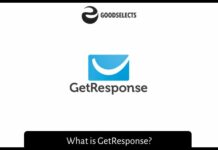When researching the best keywords for Google AdWords, it’s important to remember that single words are too generic and long phrases tend to be more targeted. For example, organic vegetable box delivery is a highly targeted phrase that will attract customers looking for your specific type of product or service. Separating individual keywords can also be less effective, because customers may use different terms to describe your products or services. That’s why it’s crucial to include all possible variations of your keywords, including synonyms, plural versions, and common misspellings.
PPC keyword research tool
There are many benefits of using a PPC keyword research tool to find the best keywords for your Google ads. One of the most important is that these tools provide you with a huge list of possible keywords for your ads. You can use these lists to improve your Google ads campaign and reduce your spending in the process. You can also use these tools to find long tail keywords that are often ignored by traditional keyword research tools.
Organizing keywords into groups is also important. Make sure to segment your keywords into groups, and group similar ones together in Google Ads. The more relevant the keyword group, the higher the chance of achieving high conversions and better quality scores, thereby reducing cost per click. By using a PPC keyword research tool, you can create effective keyword groups that will make your campaigns more effective.
A PPC keyword research tool should give you an idea of how much competition is associated with each term. Using a keyword spy tool, you can see what your competitors are spending and what keywords they rank for. This information is crucial to deciding which keywords to use for your Google ads. Using a keyword spy tool will also show you how many searches each keyword receives each month. You can also see how many clicks a specific keyword gets.
Using a PPC keyword research tool will help you determine the right keywords for your Google ads and SEO campaign. It will give you an overview of what search terms people are using, how much competition there is for each one, and how much each keyword is worth. You’ll be able to fill any gaps you see by analyzing competitor’s keyword campaigns. There are also a number of keyword research tools that you can use to find keywords for your own website.
A good keyword research tool should also help you filter your results by difficulty. Medium difficulty keywords are good for small businesses as they have lower suggested bids than high difficulty keywords. But if they’re too competitive, your suggested bid will be higher, so it’s best to avoid those keywords. If your budget is limited, you should choose keywords that are achievable, but that don’t cost too much to advertise.
Filtering out phrases with high search volume
Google Ads keyword planner features a feature to help you filter out phrases with high and low search volumes. When you filter out phrases with high search volumes, you can focus on those that have low competition. These terms may have lower rankings than those with high search volumes. Regardless of what the competition level is, you should write about them anyways to improve your brand awareness and increase your rank in Google’s SERPs.
When selecting your keywords, keep in mind that your target audience is not your primary customer. Alphabet makes 80% of its revenue from advertising, and so it’s important to know what their needs are. Think about the keywords they use to find products or services similar to yours. Once you know those, you can choose the right keywords for your ad campaign. Google’s algorithm will find your ads and display them to the right audience.
Adding negative keywords
Adding negative keywords to your campaign can make your advertising more relevant. These keywords are used to avoid being displayed for irrelevant searches. If you’re an agency, you can add negative keywords to your campaigns or ad groups. It’s also beneficial to know which match types these negative keywords fall under. This will help you maximize their value while maintaining relevance. Below are some examples of negative keywords and how they can benefit your advertising efforts.
Using a list of negative keywords will help you avoid being shown for searches that don’t pertain to your niche. It will also help you create more relevant ad groups. A more relevant ad group will have a better chance of converting visitors to customers. Additionally, removing unwanted ad clicks will save you money. And it’s easy to create a negative keyword list. Here’s how!
You can use the Negative Keyword Tool to identify negative keywords. You can enter ten or more negative keywords to find out which keywords are most relevant to your niche. You may see a competitor’s ads showing up in the organic listings, but these are likely unrelated to your own business. You should consider these results when selecting keywords for your ads. That way, you can target the most relevant ones for your niche. If a competitor does appear in a search for a specific keyword, you’ll avoid being exposed to their ads.
Another way to optimize your ad campaigns is to add negative keywords. These keywords are often valuable keywords that may not be used by the competition. They act as traffic directors, directing relevant traffic to your ads. In addition to maximizing relevance, negative keywords help you to prevent accidental misplaced impressions or irrelevant clicks. So, the next time you are creating your negative keyword list, remember to keep your ad copy and keywords optimized.
You can also use negative broad match to stop your ads from showing up for specific phrases and search terms. For example, a negative phrase match keyword may prevent ads from showing up for searches for “red rocks amphitheater in Colorado.” A negative exact match keyword is best used for brand names that are very similar and not too competitive. Also, a negative exact match keyword helps you target exact match keywords for your ads. This strategy is particularly beneficial when your competitors offer similar offers.
Adding keywords to ad group
The best way to optimize your ad groups for Google AdWords is to add related keywords. Keywords should be related in theme to your ad copy, and the ad copy should reflect the intent of search queries. Keywords should also be targeted for a high Quality Score. For example, a retailer selling high heels and running shoes would not put both products in the same ad group. Instead, they would create a separate ad group and landing page for the high heels and the running shoes, respectively.
The more relevant the ad, the higher the click-through rate and the more relevant the ad. This is particularly beneficial if you are running a lead generation or SaaS campaign. Ads with one keyword will have a higher conversion rate and will be seen as more trustworthy by searchers. With practice, you can fine-tune your ad groups to better match your keywords.
Once you have identified the best keywords, it’s time to add them to ad groups. Make sure to limit each group to 20 keywords. Many experienced marketers will recommend keeping it at twenty. Click the groups tab on the left-hand side of the screen. Once you have created an ad group, you can add more keywords to it or move existing groups. You can move keywords from one ad group to another by clicking on them, then selecting “move to group”.
Using single keyword ad groups allows you to include only one keyword per ad group. The SKAG method allows you to create multiple ad groups with several keywords, while the other two match types can be the same. This method is effective if you want to improve the performance of your ad campaign without the added expense of ad creation. Once you’ve created your ad group, add the keywords as negative keywords to the ad group.
Adding keywords to an ad group for Google ads is not difficult once you learn how to do it. Most Google Ads campaigns consist of several ad groups. The more targeted an ad group is, the more likely it is to be visible to users searching for the products that you offer. If you are a website selling running shoes, make sure you have a separate ad group for men’s and women’s shoes.




































